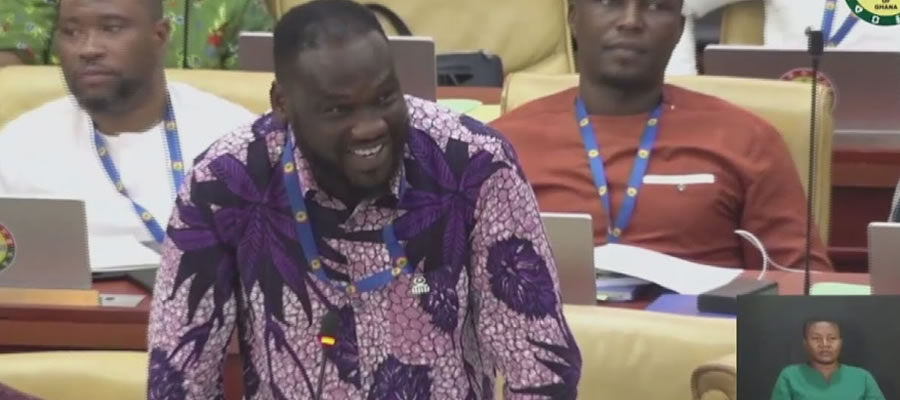

Economy of the Asante Akim North Municipality
Asante Akim North is an agrarian economy. Agriculture employs about 72.7 percent of the labour force. Following Agriculture are Services which employs 20 percent and the remaining 7.3 percent in the industry sector.
Economic Activity Status
The economic activity status (i.e. persons 15 years and older by sex) of Asante Akim North Municipality is clearly depicted in figures 1.3 and 1.4. The total population of persons 15 years and older is 41,611 representing 60.1 percent the Municipality's population. Of this number, 69.2 percent is economically active (i.e. the employed and unemployed population) and 30.8 percent is economically not active. Out of the economically active population, 95.4 percent is employed and 4.6 percent are unemployed. With regard to the male population 15 years and older, 71.6 percent is economically active and 28.4 percent is economically not active. In the case of the female population, 67.1 percent is economically active and 32.7 percent economically not active.
Local Economic Development Process
Local Government Act 462 of 1993 mandated Assemblies to be responsible for overall development of districts. They are to;
· Formulate and execute plans, programmes and strategies for the effective mobilization of resources necessary for local development.
· Promote and support productive and social development and remove any obstacle to initiate development
· Monitor the execution of development projects under approved development plans and assess and evaluate their impact on the people’s development, local, Municipal and national development.
It is therefore a constitutional requirement for Assemblies to stimulate businesses at the local level of formulating and implementing economic development strategies in tandem with overall medium term development plan and increase awareness of these plans and programs.
Local economic development include various initiatives. Some are designed to help the poor directly and some to create support for economic growth in the district. In performing its functions, the Asante Akim North Municipal Assembly involves/partners with communities, CBOs, NGOs and other stakeholders. The stakeholders are brought together for example during the development planning process to consider socio-economic needs of the Municipality and implement, monitor and evaluate the Municipal programs.
The A.A.N.M.A. facilitates arrangement for people to get assistance, support and provide credit facilities to expand their business. The district stimulates business to grow by giving incentives. For example, the Assembly has been supporting hairdressers, Artisans and PWDs with startup capital and to expand their business.
The Assembly has been providing basic infrastructure like roads, electricity, markets among others to stimulate private sector development.
Financial Base
Based on section 10 of the Local Government Act, 1993 (ACT 462) District Assemblies are charged with the responsibility of mobilizing resources for its development activities. The finances of the Assembly may be conveniently categorised into three (3): taxes, non taxes and transfers. Under the taxes are the basic and property rates, licenses, Building plans and permits.
The bases for the rates are the immovable property and resident adult of eighteen (18) to seventy (70) years. Students are however exempted. The basic rate is an annual fixed rate (a kind of poll tax) levied on the adult population. The property rate is however levied on the immovable properties. They include residential, commercial and industrial properties. Temporary structures also attract the rate.
Licenses are based on economic activities in the district. This license or tax serves as the permit for undertaking any such activity in the district.
Building plans and permits are statutory fees paid to the Assembly upon the approval of site and Building permit is purchased before the premises could be constructed in the district.
The non-taxes include market fees, other charges and rent as well as interest on investments. The fees are charges or tolls paid by the users of the services provided by the Assembly. Examples are the market tolls, rent, lorry park tolls, etc.
Transfers are made up of revenue from the Central Government sources, Lands Commission and donor partners to the Assembly. Those from Central Government include: DACF, HIPC and GetFund. Those from donor partners is DDF. The transfers from Lands Commission is the Assembly’s share of lands revenue collected from stool lands in the Municipality by the commission.
District Development fund (DDF) is also based on the Assembly’s qualification of Functional Organizational Assessment of the district.
Revenue Sources
Revenue sources available to the Asante Akim North Municipal Assembly (AANMA) are classified under Internal and External sources. The Internal sources of revenue available to the Assembly is known as Internal Generated Fund (IGF) also known as Local Generated Revenue (IGR). Internal sources of revenue include Rates (Basic Rate Property Rare), Lands (share of Stool Lands revenue, Mineral Royalties, sale of Building Permits and Mining). Fees and Fines, (Market Fees, Count Fines Lorry Park, Burial Fees, Exportation of commodities etc.) Licenses (Akpeteshie Sellers, Millers etc.) and Rent (Market Stalls, Assembly Quarters). The External sources of revenue include the District Assemblies Common Fund (DACF) District Development Fund (DDF) and School Feeding Programme Fund.
Revenue Performance
The performance of the Assembly in IGF during the period under review (2012-2013) has been encouraging. However, the IGF was not enough to be used for capital expenditure. Ninety percent (90%) of the IGF was used for recurrent expenditure. Development projects of the Assembly are largely financed from the District Assemblies Common Fund (DACF). There were no other intervention for the period under revenue review.
Table 1.7 indicates that between 2012 and 2013 the Assembly recorded a significant increase in its IGF from GH?64,577.40 to 207,039.3 even though the2012 was only six (6) months 1.e from July to December, 2012.
The increase represents 68.81%. There are a lot of revenue potentials particularly property Rate, Plot registration, Exportation of farm produce among others. If these revenues heads are tapped fully, it will go a long to increase the revenue of the Assembly. Despite the significant increase of the IGF in the 2013 Financial year, the Assembly still have some problems be setting it if not addressed could affect its performance in the years ahead. They include:
1. Absence of valuation of properties
2. Inadequate valuation of properties
3. Inadequate qualified revenue staff
4. Multiplicity of taxes confronting rate payers
5. Low morale among revenue collectors
6. Lack of building inspectors to ensure registration of plots and acquisition of building permits.
Intervention
There were limited number of interventions which provide funds for the development of basic infrastructure and other services of the Assembly. These include JICA, programme which support Rice Farmers in the Municipality, School Feeding Programme and National Youth Employment Programme among others.
Expenditure Trend
An analysis of the trend of the Expenditure shows that the Assembly spent close to 90% of its IGF on recurrent expenditure in 2013.The capacity of the Assembly to commit its IGF to development expenditure is very low.
Income Level
Poverty has been expressed at two levels, thus;
i. The poverty line
ii. Hard core poverty
The poverty line has been defined as subsiding on an income which is less than two-thirds of the national average. The average annual income of the district is estimated as GH¢126.52. The Municipal poverty is estimated at twenty percent (20%) of the population. Those found below the hardcore poverty line is estimated at 8.5%. There is therefore the need for the Municipal Assembly, the private sectors, NGOs CBOs, Donors and all major stakeholders in the municipality to come out with policies, programmes and projects that are geared towards poverty alleviation in the Municipality, especially in the rural areas.
Poverty Profiling Maps
An analysis of the district poverty profiling was carried out by the district involving all major stakeholders i.e. Area council, District Assembly, Heads of departments, farmers etc. in the Municipality. The Municipality was divided into four (4) poverty parts based on their poverty characteristics/ manifestations. The analysis revealed that different parts of the district have peculiarities which distinguish them from each other and this reflect in the manifestation/ dimension of poverty. The poverty profiling helps in the formulation of key interventions towards poverty reduction.
Date Created : 11/21/2017 3:33:22 AM












 facebook
facebook
 twitter
twitter
 Youtube
Youtube
 +233 593 831 280
+233 593 831 280 0800 430 430
0800 430 430 GPS: GE-231-4383
GPS: GE-231-4383 info@ghanadistricts.com
info@ghanadistricts.com Box GP1044, Accra, Ghana
Box GP1044, Accra, Ghana